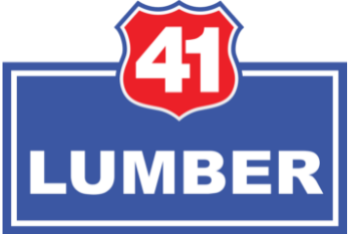{article.name}
Social Media Links
General Woodworking Knowledge

- Share this:
- Share on Facebook
- Pin on Pinterest
- Tweet on Twitter
Woodworking encompasses an incredibly wide spectrum. This includes anything from making knickknacks and birdhouses, to building heirloom furniture and ornate mouldings. The one thing that is a constant across all of it is a basic knowledge of the materials.
Almost everybody is familiar with naming conventions for wood such as 2 x 4, 4 x 4, 1 x 6, and the like. When you start throwing fractions at the average layman, like 4/4, 5/4, 6/4, 8/4, they may look at you rather puzzled. What do those fractions mean? Basically, they indicate the thickness of wood in increments of a quarter inch. So, 4/4 = 1 inch, 5/4 = 1 ¼ inch, 6/4 = 1 ½ inch, and so on. Primarily, these quarter inch increments are used for hardwoods. Most custom-made products like furniture and cabinets require a variety of thicknesses and so this standard has been developed. Since most lumber mills try to get the most yield from each log, they will end up with varying thicknesses. Thus, they have settled on increments of quarter inch and sort them accordingly. This process results in as little waste as possible.
The reason for set sizes of 2 x 4’s, 4 x 4’s, etc. is to accommodate the standards in building construction. According to woodworkersource.com, this system of naming lumber thicknesses by quarters was established by the National Hardwood Lumber Association, an organization that has been around since 1898. Their goal was to establish a uniform system of grading rules for the measurement and inspection of hardwood lumber.
Another common question is, “Why isn’t a 2 x 4 really 4 inches wide?” The truth is, it was at one time. However, that was in a state known as “rough cut”. When most 2 x 4’s are sold, they have been planed smooth and flat. The planing process removes a certain amount of material, thus reducing the thickness.
There are some advantages and disadvantages to selecting rough-cut or finished wood. For finished wood, advantages are that it is ready to work on, with no additional tools needed to get the wood prepared. The disadvantages are that finished wood is generally more expensive than rough-cut and because of variances in thickness; it will have to be sorted before using. For rough cut wood, advantages are that it is generally cheaper to purchase and you can finish the wood to your exact specifications before using it. You can also ensure that the wood is straight and true, rather than having to sort through a pile of finished lumber that may contain warped pieces. Some of the disadvantages of rough-cut lumber are that additional tools are required to do the finishing, there is additional time required to finish the lumber, and some rough-cut wood doesn’t show the imperfections until after it has been planed.
Some common terms used in woodworking are:
- Board foot: typically is 144 cubic inches, or one square foot of lumber at 1 inch of thickness.
- Butt joint: this is a joint where two boards are placed up against each other.
- Crosscut: a cut that runs across the board, perpendicular to the grain.
- Flush: when two adjoining surfaces are perfectly even with each other.
- Grain: the direction of the fibers in the wood.
- Kerf: this is the width of the saw cut. It is determined by the thickness of the saw blade.
- MDF: an acronym, meaning medium density fiberboard. This is a very stable material commonly used for countertops and covered with laminate.
- Particleboard: this is a generic term for a material made from wood particles that is bound together with an adhesive.
- Seasoning: process of allowing wood to dry. Typically, air dried wood takes one year for every inch of thickness.
- Softwood: ironically, this is no reference to the actual hardness of the wood. Softwood is manufactured from trees with needles or scale-like leaves.
- Tongue and groove: this is a method of joining wood where a protruding tongue fits into the groove of another piece of wood, similar to puzzle pieces fitting together.
- Veneer: this is a thin layer of a much more expensive wood that is glued on to a less expensive material such as plywood. This is a common way to produce furniture at a reduced cost.
- Warped: when there is a bend or twist along the grain of wood, making it less straight and true.
Sign up for our Email List
Stay updated with all our latest posts, products and offers! Just enter your information below.


Comments